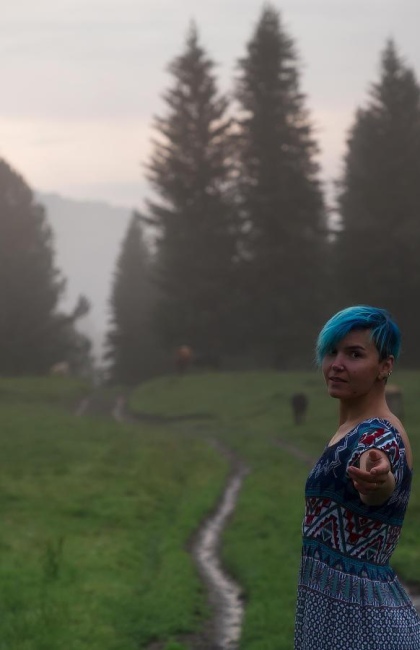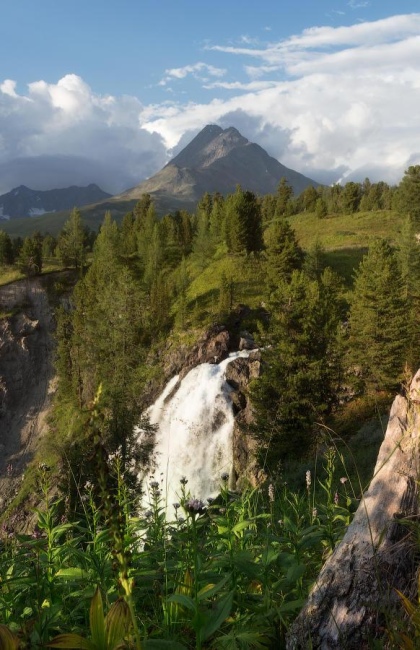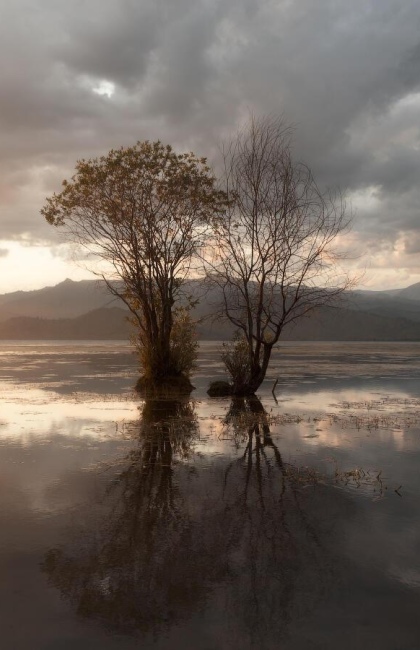Discovering Kazakh Altai: Mystical Wonders and Natural Beauty
Enchanting Altai
Altai – a word that encapsulates the frigid breath of snow-capped peaks, entrancing shamanic melodies, and the fragrant aroma of grasses and blossoms. Altai's essence is forged from rugged stone formations, alpine meadows, and peaks cloaked in perpetual ice.
The Kazakh Altai can be likened to a bridge, connecting the Siberian taiga to the Central Asian deserts. Nestled in the southwest of the Altai Mountain Range, it occupies nearly half of the East Kazakhstan Region. It's a remarkable land where lakes and mountain streams interlace with coniferous forests and mountain ridges. Altai is rich in mineral resources, breathtaking landscapes, and rejuvenating springs. Katon-Karagai National Park, with the towering Mount Belukha, is a treasure of Altai. Meanwhile, the Markakol Nature Reserve cradles Lake Markakol, an Eastern Kazakhstan jewel. Altai is the birthplace of the Irtysh River, while at the mountain's base lies the Bukhtarma Reservoir, one of the largest artificial lakes in the world, and Lake Zaysan, Earth's most ancient lake.
In the heart of Kazakh Altai rest the Berel burial mounds, ancient permafrost tombs designed to preserve remains. These monuments date back to the V-IV centuries BC.

Flora and Fauna
Diverse climatic zones have fostered a rich tapestry of flora and fauna within these mountains.
Forests, often mixed with cedar, fir, pine, aspen, larch, birch, and more, flourish from 800 meters (2600 ft) above sea level. Edible berries like rowan, blueberries, and raspberries dot the landscape. Beyond 2000 meters (6500 ft), the glacier zone unfurls.
Altai not only harbors valuable minerals like gold, silver, bismuth, molybdenum, cadmium, copper, and indium but also shelters rare animals, plants, birds, and fish.
Lake Markakol is home to the Altai lenok, an endemic fish species. The beauty ratsnake was discovered in the Kurchum Ridge, previously thought to dwell only in Korea and Manchuria. Other elusive species include the snow leopard, manul, Siberian musk deer, beech marten, red wolf, Altai snowcock, and more. Altai's rare plants include maral root, golden root, Macropodium nivale, among others.
In addition to these rare species, Altai hosts "common" inhabitants such as wild boar, elk, falcon, stork, heron, crane, squirrel, and bear.

The Beckoning of Altai
Altai's allure dates back to ancient times, captivating explorers, ethnographers, and geographers. Seekers have scoured this region in search of the mythical country of Shambhala and Belovodye, a legendary kingdom from the tales of Russian Old Believers. It's no surprise that Altai is considered bewitching – once you set foot here, leaving becomes an arduous endeavor. It's as if a magnet lies concealed within the heart of these mountains.
Throughout Altai, esotericists designate certain places as "power spots." In these places, energy concentrates in ways that can elicit unexpected effects on individuals. Predicting the outcome is impossible; one might simply feel invigorated or undergo a profound shift in perception and psychic awakening. UFO sightings are more common in such areas than anywhere else, prompting ancient mystical rituals to be conducted here. Altai continues to beckon occultists, yogis, and those drawn to the supernatural.
Climate
When comparing the climate of Altai to that of Tien-Shan, it becomes evident that the former experiences considerably colder temperatures. The coldest months in Altai are January and February, with average temperatures dropping to as low as -17 to -22°C (1-8 oF). In contrast, July sees relatively milder weather, with average temperatures ranging from +14 to +16°C (57-61 oF).

How to get there?
Getting to Kazakh Altai from Almaty
Kazakh Altai encompasses a vast expanse, and reaching it is most convenient from Ust-Kamenogorsk, Semey, or Ridder. Below are transportation options for reaching these cities from Almaty or Astana.
Almaty to Ust-Kamenogorsk
By road: The distance is 983 km (611 mi) via highway A-3, and the journey takes about 18 hours by car.
By air: There are direct flights from Almaty to Ust-Kamenogorsk 1-3 times a day, with a flight duration of approximately 1.5 hours.
By train: Daily trains depart from Almaty-1 railway station, and the travel time is one day.
Almaty to Semey
By road: Covering a distance of 1002 km (623 mi) via highways A-3 and R-138, the journey takes around 18 hours by car.
By air: Direct flights to Semey are available once a day, with an approximate flight time of 1.5 hours.
By train: Daily trains are available from Almaty-1 station to Semey.
Almaty to Ridder
By road: The journey to Ridder covers over 1110 km (690 mi) and takes approximately 20 hours along highway A-3.
No direct flights to Ridder are available from Almaty; however, it is possible to reach Ridder through Ust-Kamenogorsk, Semey, or Astana.
Getting to Kazakh Altai from Astana
Traveling from Astana to these destinations can also be accomplished through various means.
Astana to Ust-Kamenogorsk
By road: The journey takes around 13 hours via highway M-38 or R-174, covering a distance of approximately 981 km (610 mi).
By air: Direct flights from the capital to Ust-Kamenogorsk operate daily or periodically, depending on the airlines. The flight duration is about 1 hour and 40 minutes.
By train: Daily trains depart from Nurly Zhol railway station (Astana) to Oskemen-1 railway station (Ust-Kamenogorsk).
Astana to Semey
By road: The journey covers 768 km (477 mi) and takes a little over 10 hours along the P4 highway with a turn to R-174.
By air: There are direct flights 5-6 times a week with an average flight time of 1.5 hours.
By train: Trains to Semey from Astana depart from both train stations in the city, with varying frequencies depending on the type of train.
Astana to Ridder
By road: The distance to Ridder is 1003 km (623 mi) via the P4 highway and R-174. Traveling by car takes approximately 15 hours.
There are no direct flights from Astana to Ridder.



_420x650_4ab.jpg)
